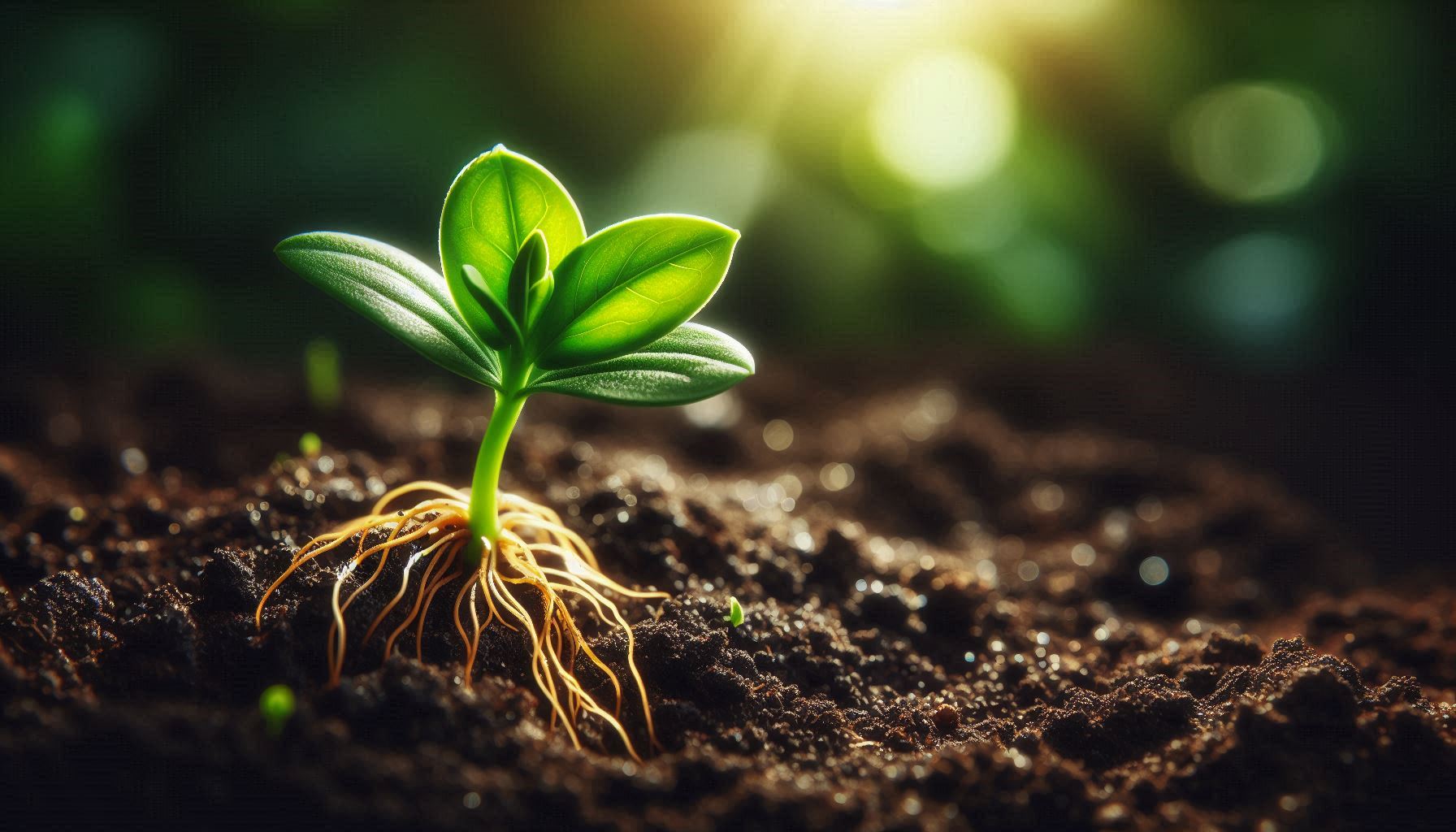When researching plants, you come across the topic of growing points. Growing points are places where cell division is active and new leaves and roots are formed, and they are mainly found at the tips of stems and roots. If the growing point is damaged, growth can be inhibited, and depending on the factors, the growing point can move and grow from a new growing point. It seems that the presence of growing points is important for plant growth.
Vertical and horizontal growth points
There are two types of growing points: those that make plants longer vertically (primary growth) and those that make them thicker horizontally (secondary growth). The vertical growing points at the tips of stems and roots are called apical meristems, and they make the stems grow upwards and the roots grow deep underground. The horizontal growing points that are cylindrical inside the stems and roots are called lateral meristems, and they make the stems, roots, and trunks thicker every year.
Undifferentiated cells
Undifferentiated cells are cells that have not yet differentiated into specific tissues or organs, and can change into various organs. It seems that these undifferentiated cells gather in large numbers at growth points where cell division is active, and after they divide one after another to create new cells, they differentiate into new tissues and organs. Cells that can change into various ways seem to be special, and are sometimes called plant stem cells.
Also, in plants, a phenomenon called dedifferentiation occurs, in which differentiated cells return to an undifferentiated state and create new organs. When a leaf is injured, a collection of cells called callus forms at the wound, and tissue is regenerated from within. Plants have the ability to differentiate totipotently, which allows them to create all types of cells in the body from a single cell. It is this ability that makes the regenerative abilities of plants so amazing.
tropism
The tropism of plants seems to be the change in the direction of growth due to light, gravity, contact stimuli, etc., and is called phototropism, gravitropism, and thigmotropism, respectively. At the growing point, a plant hormone called auxin that promotes growth is produced, and since auxin moves to avoid light, the plant grows more on the side that is not exposed to light. As a result, it bends toward the light. This is probably why sunflowers turn toward the sun.
Also, auxin seems to be produced in the upper part of the bud and moved downward by gravity, or produced in contacted cells and moved to uncontacted parts. As a result, the bud bends in the direction of gravity or in the direction of contact, and it is thought that gravitropism is effective when the roots wrap around, and thigmotropism is effective when the vine wraps around.
various growth points
When the growing point is damaged, growth stops, but to avoid this, some plants have their growing point near the ground, rather than at the tip of the stem. Examples of this include plantain, also known as a trail plant, which grows when stepped on, and grasses that continue to grow even when eaten by animals.
Also, while most trees only have one growing point at the tip, bamboo has growing points at all nodes, which is why it grows so quickly. In addition, the growing points of coniferous trees such as pine and cedar are usually dormant, but become active all at once only in the spring.
Great growth points
Basically, plants only have the option of growing taller or thicker, but it’s amazing that they can adapt to various environments using only that method. The system of growing points seems to be a highly efficient mechanism that allows plants to survive in the environment they are placed in, since they cannot move like animals. Growing points are amazing. The thriving of plants on Earth is amazing.


